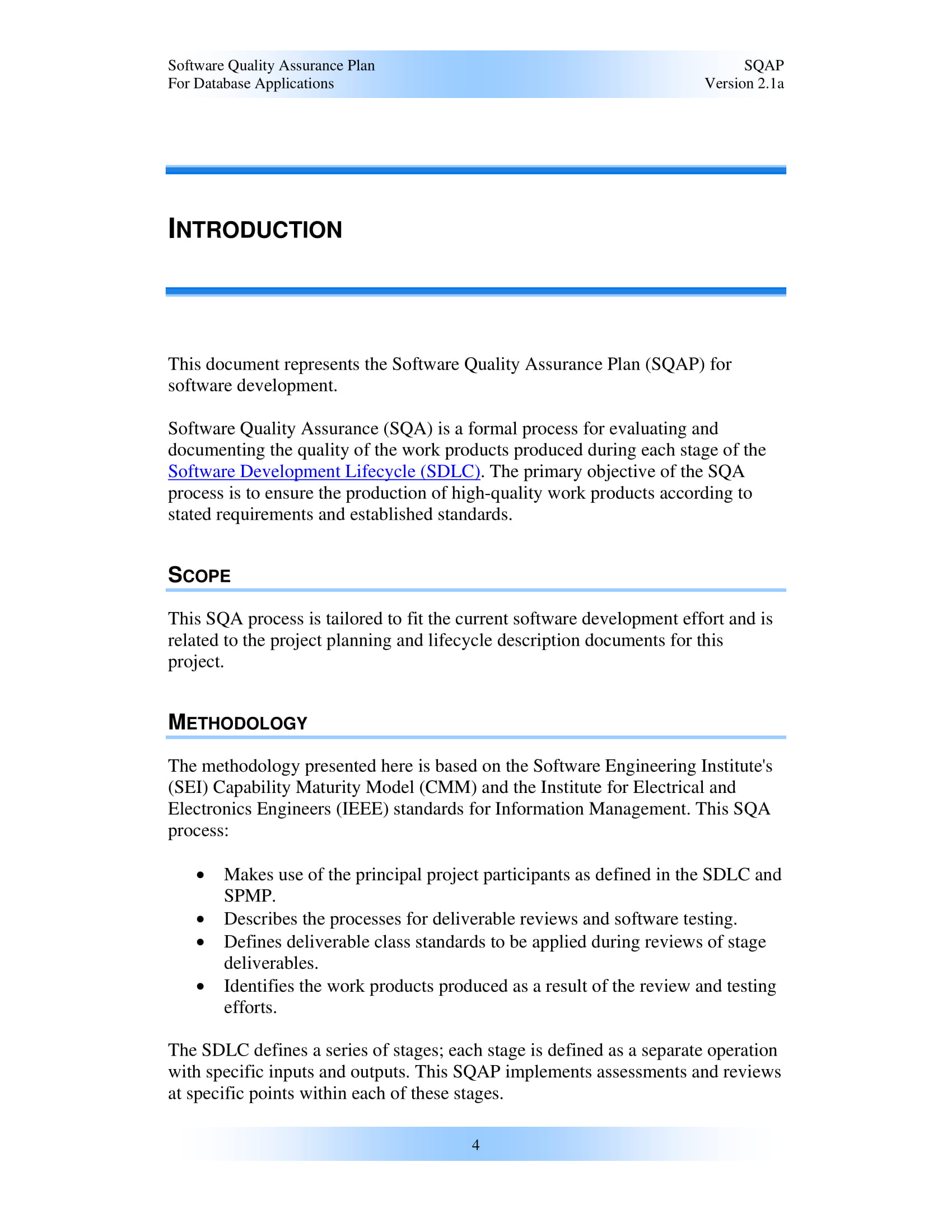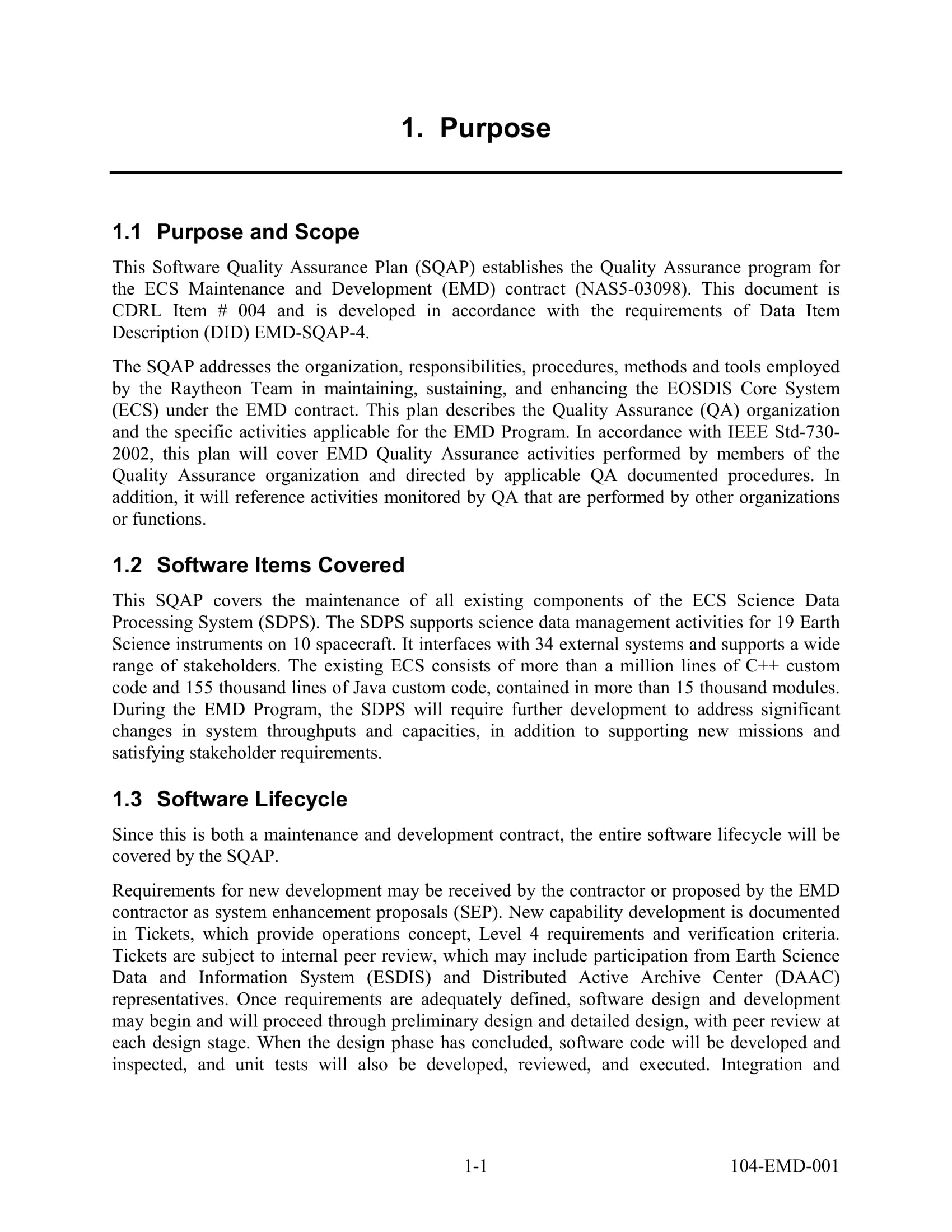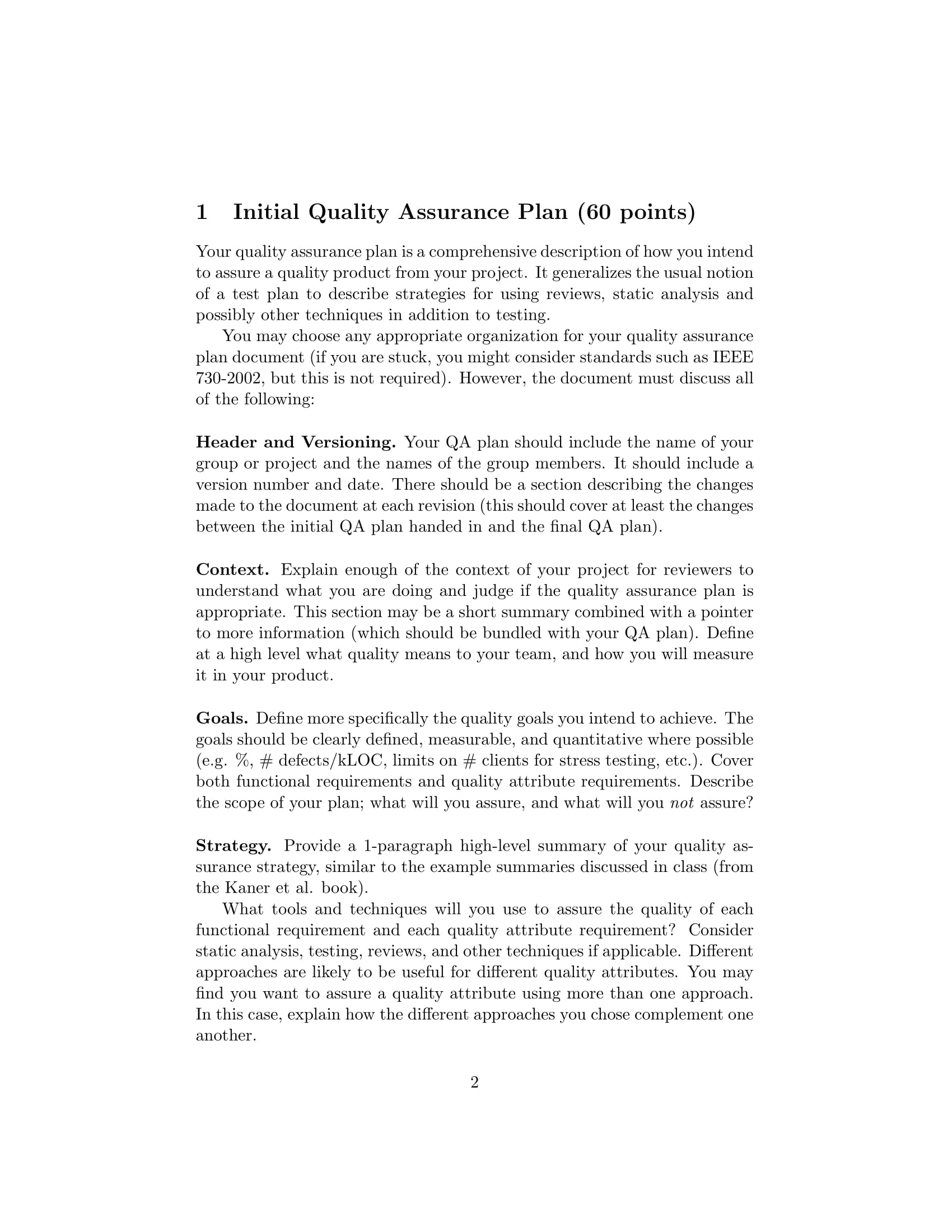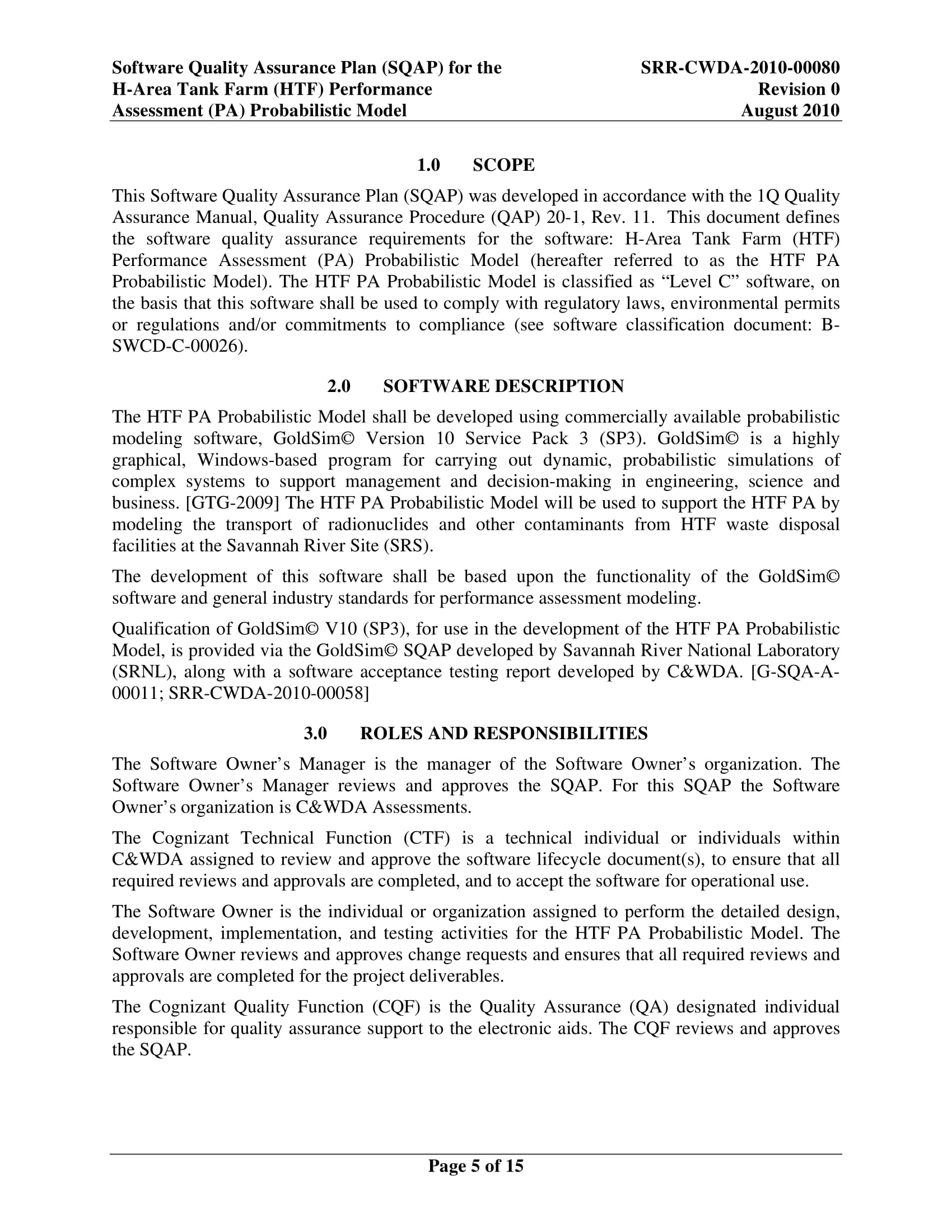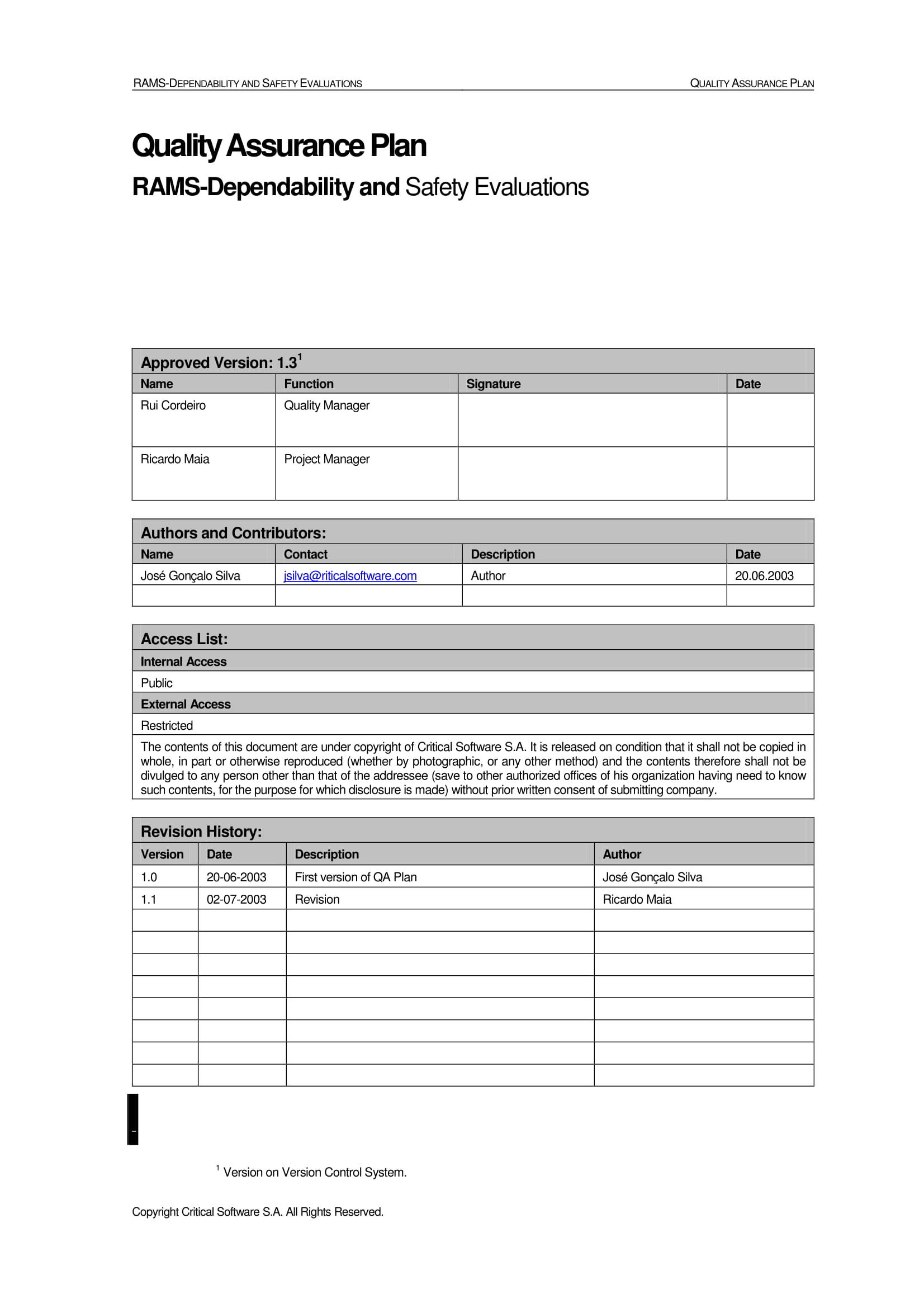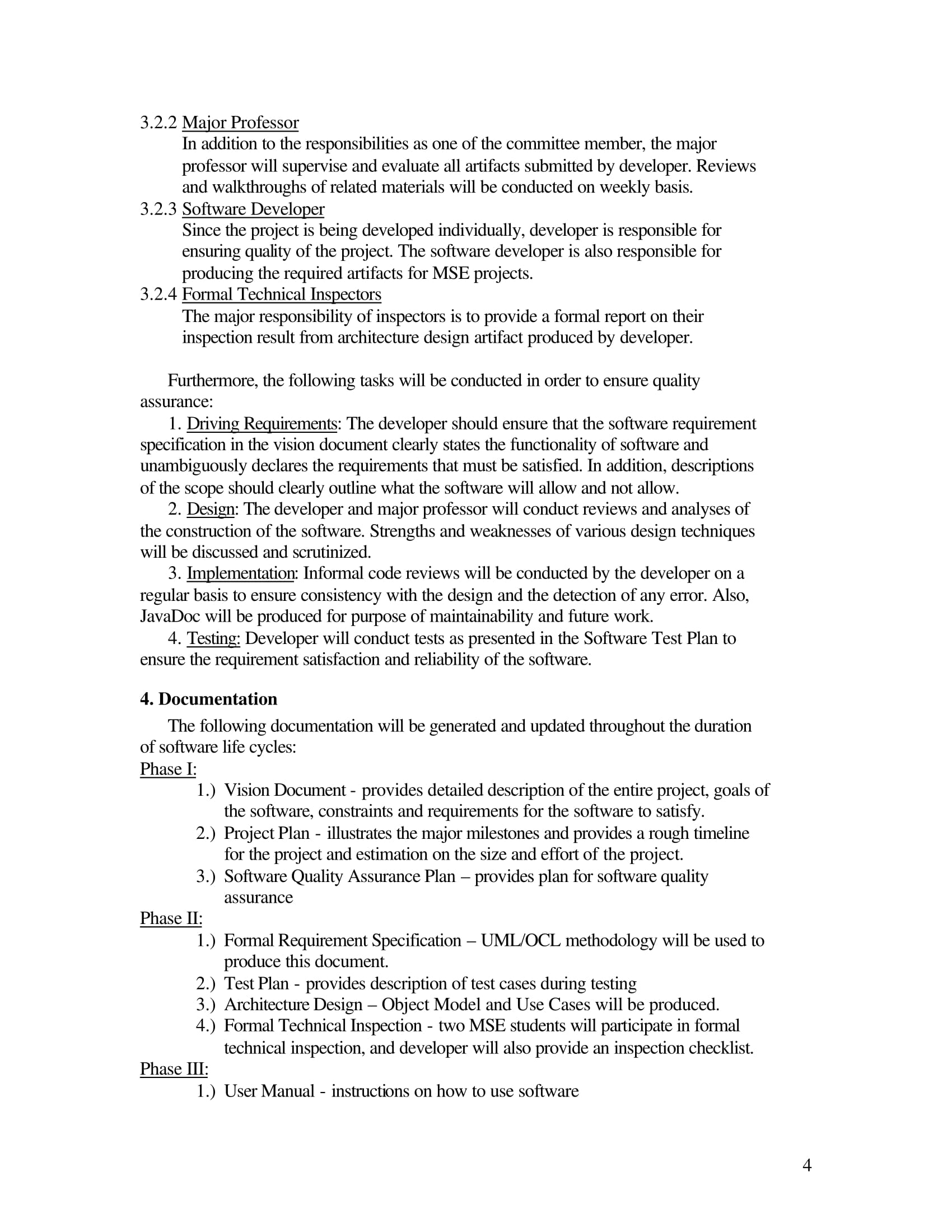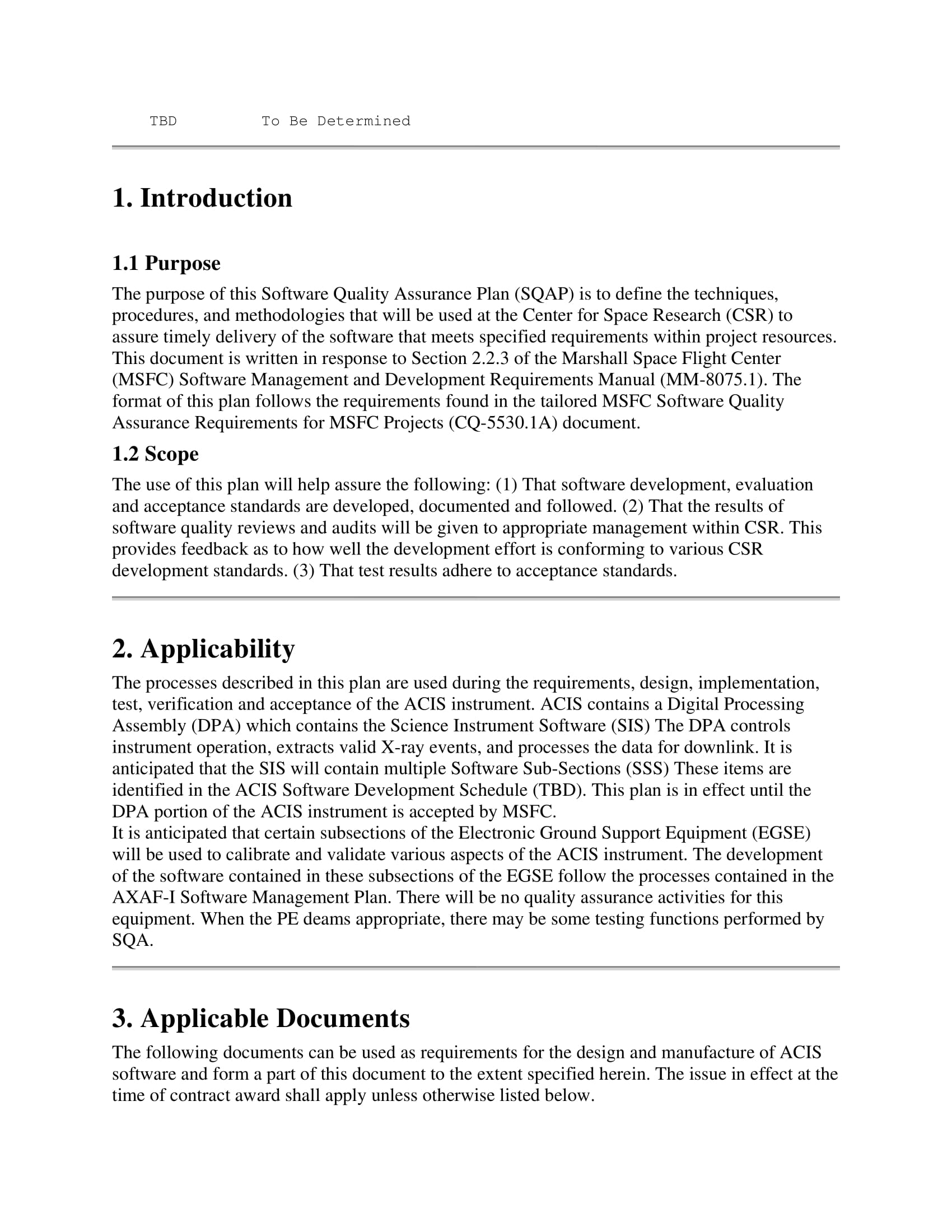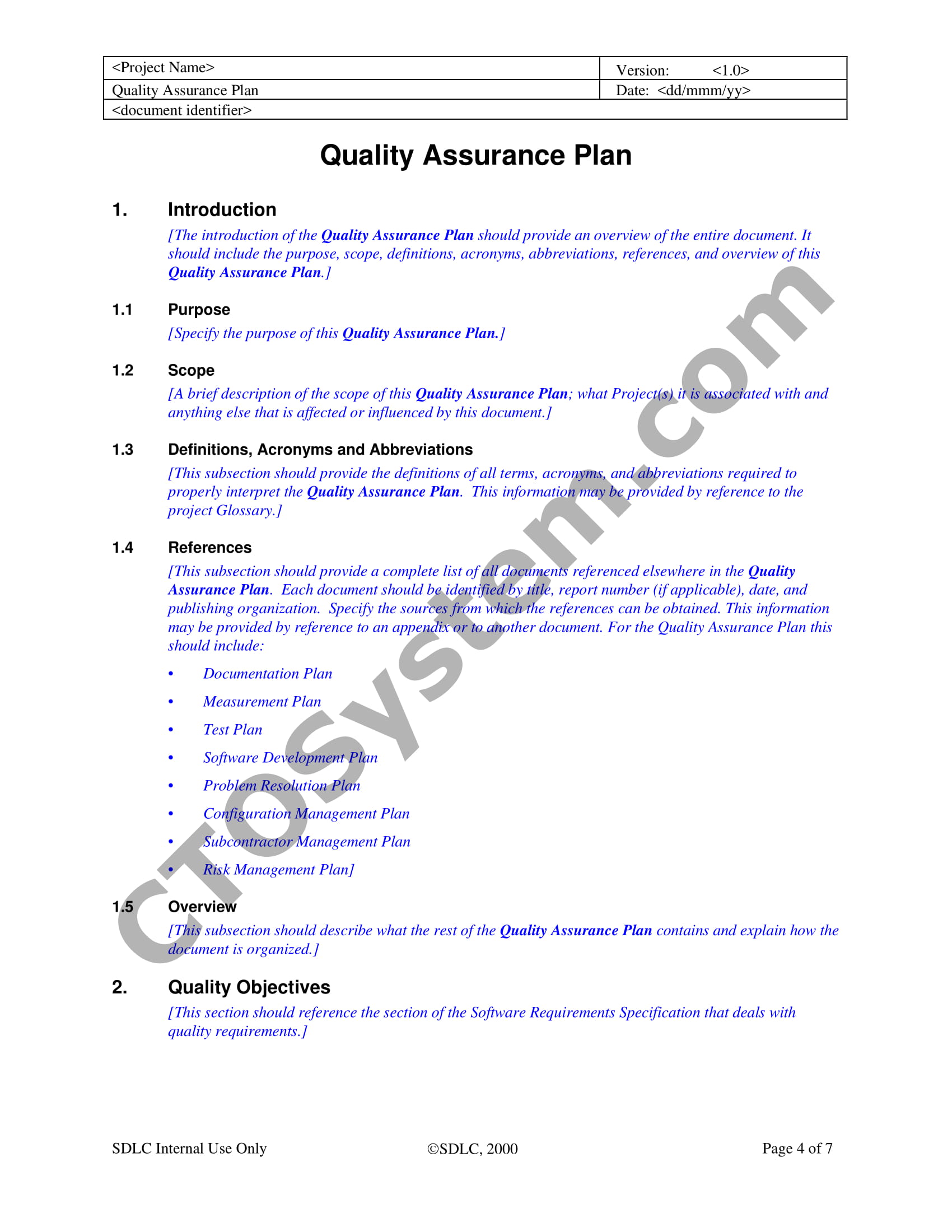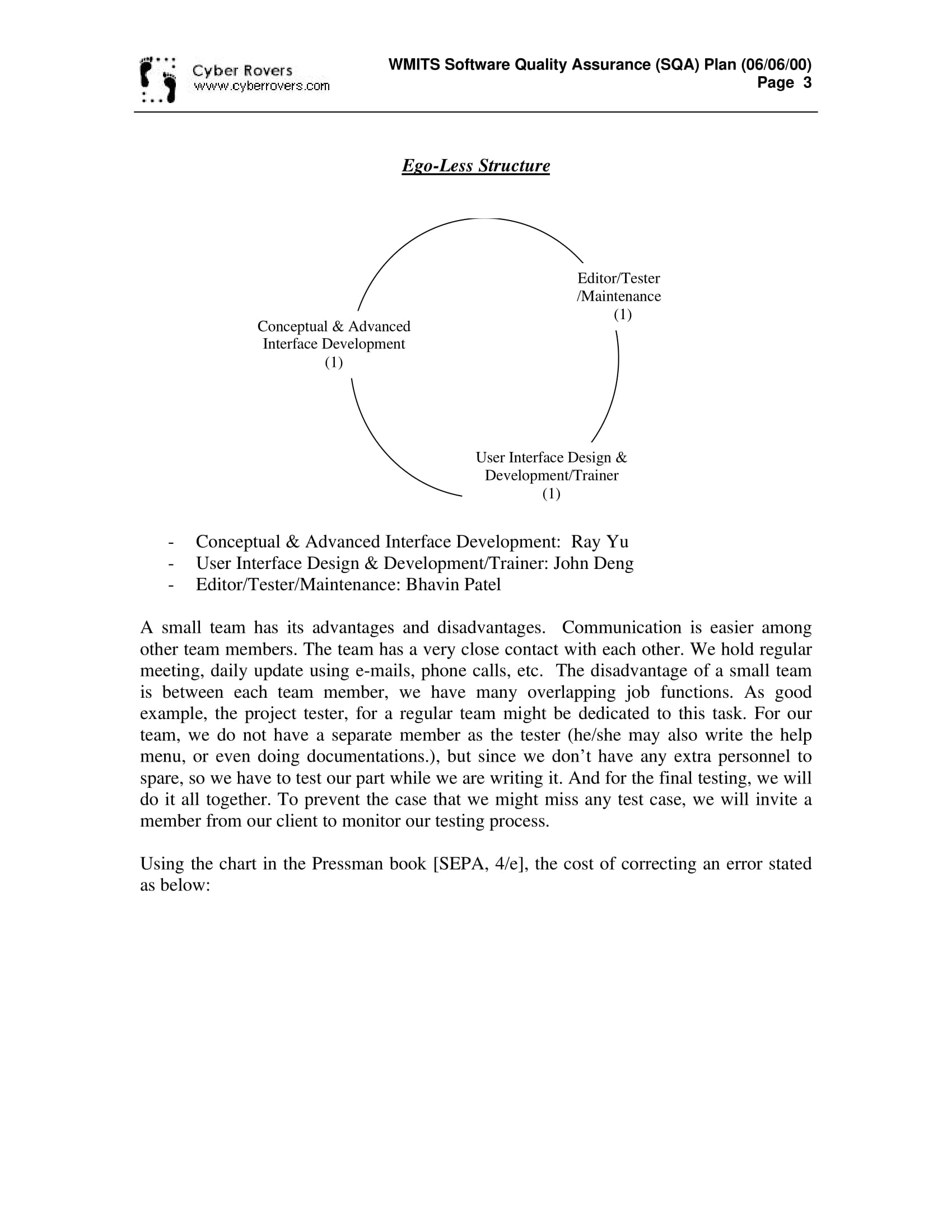11+ Software Quality Assurance Plan Examples to Download
Software developers spend hours on end brainstorming, conceptualizing, and designing system ideas to automatize our day-to-day activities. Over the years, the advent of technology and the Internet has allowed developers to introduce various Web- and mobile-based systems for professionals of different fields to utilize. You may also see advertising plan examples.
Various e-learning applications and software have even made it easier for students and other knowledge-seekers to study more about a particular domain at the comfort of their own homes.
But like any other project, managers need to ensure that the quality of a system is managed effectively throughout the development process. For this reason, a good software quality assurance plan must be prepared to aid in this endeavor. You may also like business plan examples.
Sample Quality Assurance Plan Template

Project Quality Assurance Plan Template
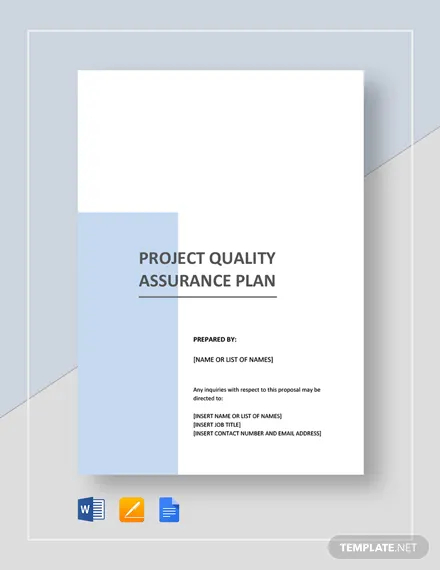
Database Software Quality Assurance Plan Example
EMD Software Quality Assurance Plan Example
Final Project Software Quality Assurance Plan Example
What Is Software Quality Assurance?
In the past, many companies have developed unique ideas to launch their brand. From gathering some of the most famous brand ambassadors to building a unique brand identity, grabbing the attention of a targeted market becomes the easiest part. Because of the hype surrounding the brand, product sales skyrocketed during its initial release. Sure, the numbers were outstanding, but the reviews? Not so much. You may also see weekly plan examples.
This is because some project managers fail to recognize the importance of good project management. Marketing may help you generate public attention, but poor quality is what will drive your customers and clients away from your products or services offered.
You can promote your products and make exaggerated claims, but if it fails to meet consumer expectations when put to the test, it’s bound to receive negative remarks from the purchasing market.
Similarly, in the area of information technology and software engineering, a project team must ensure that their products are of the utmost quality.
Software Quality Assurance (SQA) is a planned and standardized pattern of actions performed to provide sustainable evidence that a software product does conform to the necessary requirements during stages of development. It is comprised of methodologies and techniques of assessing the software development procedure, methods, tools, and technologies used to guarantee the quality of the developed software. You may also like evaluation plan examples.
It is also an ongoing process that occurs within the software development life cycle to ensure that the developed software meets the desired measures. The success of SQA can be obtained through the use of well-defined practices for quality control to assure the integrity and reliability of the said software. You may also check out risk plan examples.
Characteristics of a Quality Attribute Approach
Software quality refers to the process of evaluating the software based on certain attributes. This involves the thorough study of the internal and external features of the software, including real-time operations experienced by the end user and the actual code written in which only the developer is aware of. Anything discovered in the system that does not conform to the requirements of a client can be considered as a defect. You may also see annual plan examples.
Design error may have been caused by multiple problems in the system, including poor functional logic, incorrect coding, or improper data handling. There are several ways for a project team to detect these errors before the software is launched, one of which is through the quality attributes approach. You may also like daily plan examples.
Listed below are the six quality characteristics of the QA approach:
1. Functionality
A simple software can consist of a series of functionalities that cater to the needs of a user.
As a QA tester, you need to determine whether the functions of the software are appropriate for the developed system and its intended users (suitability), if functions are implemented correctly (accurateness), how the software interacts with other components of the system (interoperability), if the project complies with the necessary laws and guidelines (compliance), and if the software is capable of handling general data-related transactions securely (security). You may also check out management plan examples.
2. Reliability
System failure is not an unusual event. But during quality testing, you need to examine the system’s ability to withstand component failure. The system should be able to get back into full operation even after a possible failure in the software. You might be interested in implementation plan examples.
3. Usability
Creating a user-friendly system is one of the primary aims of any developer. The understandability of each function and learning ability of different types of users must be considered when conducting this kind of approach.
4. Efficiency
Good architecture and coding practices can go a long way for software engineers. A messy code can lead to grave consequences down the line, especially in terms of system enhancement.
5. Maintainability
In connection to what was previously mentioned, an efficient system is also a lot easier to maintain. The readability and complexity of the code can greatly impact a developer’s ability to identify and fix a fault in the software. You may also see financial plan examples.
Modifications could easily be made if the code is made flexible enough for different programmers to work with. Otherwise, tracing and debugging would be a daunting task that could take days or even weeks to accomplish.
6. Portability
It’s important for a software to adapt to different environments. For instance, a system must function just as effectively on a Web platform as it does on mobile. The adaptability, installability, conformance, and replaceability of the software must be noted accordingly. You may also like quality plan examples.
What Is User Acceptance Testing (UAT)?
Before a software is formally introduced to its intended audience, it goes through a process called user acceptance testing, also known as beta testing, in which the software is tested in the “real world” by its potential users. Here, volunteers or paid test subjects are asked to examine the system and forward a formal report based on their experiences.
Developers would then take these remarks into account and make the necessary adjustments before releasing the software commercially. UAT is a vital step for the successful deployment of any software system. Failure to do so can lead to negative PR, which can ruin a company’s reputation in the long run. You may also check out training plan examples.
Formal Software Quality Assurance Plan Example
NASA Software Quality Assurance Plan Example
RAMS Software Quality Assurance Plan Example
Software Project Quality Assurance Plan Example
Quality Assurance (QA) vs. Quality Control (QC)
In the world of quality management, these are two terms that have often been used interchangeably. Though they both consist of interrelated activities, they are defined rather differently.
Quality assurance involves a set of activities that focuses on the prevention of potential defects present in the system. It is a process-oriented procedure that must be conducted while the project is still being developed. It is a managerial tool that requires ongoing verification on the written code and its specified function. You may also see sales plan examples.
Quality control, on the other hand, is a product-oriented process that is done to identify the defects in the finished product. It is a corrective tool used to find and eliminate sources of quality problems so that a client’s requirements are met before the software system is formally deployed. You may also like event plan examples.
This is usually performed by a designated team of testers through various validation or software testing procedures. Some of the most common means of testing include black box testing and white box testing.
Both processes are equally crucial in a quality management plan. This is to ensure that client requirements have successfully been met, and that end users are fully satisfied with what you can offer.
Black Box Testing vs. White Box Testing
Imagine you were looking for a tourist van to transport you and your friends to the beach. The only photograph on the van rental’s website showed two options, a tourist van with tinted windows and one without it.
Since the windows of the first option were tinted, it’s impossible to see what’s on the inside, which is why you could only assess the quality of the van based on its external elements. On the contrary, the tourist van without tinted windows is a lot easier to evaluate. You could clearly see its interiors, and assess whether it’s something that suits your standards. You may also see transition plan examples.
Black box testing and white box testing is pretty much the same thing. With black box testing, the internal structure or design of the software is not made known to the tester. The only thing that the user is aware of is the general interface of the system and its functions. You may also like company plan examples.
The tester, who is generally an independent software tester, is oblivious of what code or method is being used for each functionality to perform the desired action. This modus operandi is mainly applicable for higher levels of testing, such as Acceptance Testing and System Testing. You may also check out work plan examples.
As for white box testing, the tester is given the liberty to see the internal structure or design of the item tested. Programming and implementation knowledge is required for it to be done as well. This is usually performed by software developers who can perform lower levels of testing, such as unit testing and integration testing. You might be interested in personal plan examples.
Software Quality Assurance Plan Example
Software Quality Assurance Plan Guidelines Example
Software Quality Assurance Plan Sample
How to Develop a Quality Assurance Plan
A quality assurance plan is an important document used to properly carry out the quality assurance activities needed for a project. This serves as a guide in checking if the defined project process is being followed correctly, as defined by the supporting plans that it references, including the software development plan.
Here the essential steps involved in creating a quality assurance plan:
1. Ensure quality objectives are identified
Though a project manager may not define the exact objectives for a project being developed, one must ensure that these definitions are agreed upon by the client.
The Software Requirement Specification (SRS) indicates the exact necessarily goals that need to be accomplished during the development process. Some examples of these professional goals include a maximum of 3-second response time or for a user to easily navigate through the entire system within an hour.
2. Define QA roles and responsibilities
Once your objectives have been properly identified, you must then define the organization, along with the roles and responsibilities of each member of the team. You need to be as specific as possible with these roles, as they may greatly impact the outcome of the software project. You should also make sure that they are relevant and valuable toward achieving your goals.
3. Coordinate with project developers
No project plan would be a success on its own. As a manager, see it to that your quality assurance plan correlates to the other management plans involved in the development of a project. Those working on the risk management plan, the resource management plan, and the change management plan should be on the same level as your team. The best you could do is to stay in close contact with other managers involved in the software project plan.
4. Determine QA tasks and time schedule
Because quality assurance is a thorough process that must be conducted throughout different stages of software development, it’s important to note down these tasks and when they should be performed. Review and audit schedules of the project plan must be specified clearly. Keep in mind that these tasks must be defined in accordance to the roles and responsibilities of each member.
Software quality assurance is an important process that helps ensure the development of a high-quality software project. These practices are strictly implemented in most types of software development, regardless of the underlying model being used. You may also see research plan examples.
Various software testing methodologies are incorporated into this process to evaluate whether the software meets the specified requirements as well. With a software quality assurance plan in place, you can increase your chances of generating better project results to satisfy clients and to answer to the needs of end users. You may also like parenting plan examples.



